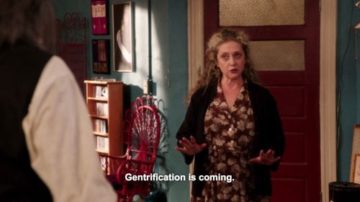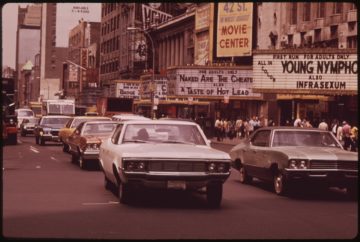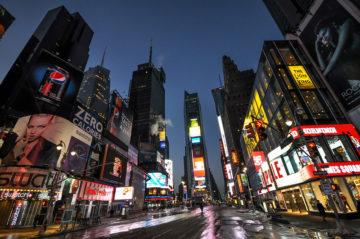by Mindy Clegg

Back in 2018, police raids shut down some New Orleans strip clubs in the famed French Quarter for alleged drug and sex trafficking. In the aftermath, several venues closed for good even though there were no arrests for sex trafficking. In an op-ed, dancer and activist Reese Piper argued that rather than being trafficking victims, most dancers were there by choice and sought greater legal protections for their profession. Rather than making arrests for trafficking, the NOLA police made arrests for prostitution, which they conflated with trafficking. But many sex work activists opposed this characterization of both prostitution and stripping. In her article at The Appeal from 2018, Melissa Gira Grant described how the city proposed changes, such as capping the number of clubs allowed in the French Quarter. Such measures failed because of a protest led by the dancers from the raided clubs. Many connected these raids to the gentrification sweeping the city since hurricane Katrina in 2005, recently described by Joseph Chanoff. As in many other American cities, working class residents, especially people of color, are being priced out of their communities in the wake of Katrina. Many fear that the nature of the city will change, making it a simulacra of itself, an image of New Orleanian culture rather than the thing itself. But what does it mean to change a culture by “sanitizing” it? What about pricing out one community in favor of another? Does revitalization always mean driving out the things that make a local culture unique for a tourist-focused commodified version? What sort of world-view does gentrification create? Making cities safer and more livable should be a priority, but not at the expense of some people in favor of others as Chanoff argued.
In many major American cities, housing costs are spiraling out of control and have been for years now. Such phenomenon are the end point not the start of gentrification. In New York City, the working and middle class residents have been steadily pushed out of the city for the past few decades. Neighborhoods that formerly housed working class communities and young artists have transformed into urban playgrounds for the wealthy elite. The Netflix sitcom The Unbreakable Kimmy Schmidt made light of gentrification in several episodes. Landlady and all around weirdo Lilian Kaushtupper (played by the excellent Carol Kane) took a stand against the changing nature of her neighborhood by staging a protest, running for public office, and physically attacking people she dubbed gentrifying “hipsters.” It was played for laughs, but the blog Think Urbanism argued that the show had a thoughtful discussion of the issue by seeking to make an argument for revitalization of economically impoverished urban communities that lifts up residents rather than pushes them out. Generally speaking, gentrification has led rather than bottom-up, grassroots revitalization that benefited the existing residents. Take the example of Hudson Yards in New York City. This was a new development rather than gentrification of an existing neighborhood, yet it gives us some insight into what some are attempting to do with the urban landscape–sanitize rather than revitalize. Caitlin Doughty of Ask a Mortician recently discussed the newly established New York tourist attraction, the Vessel, housed at the upscale development.


Although she focused on the Vessel as an object for suicidal ideation (so trigger warning for viewing the video) and the design flaws that can contribute to acts of suicide there, she also pointed out the exorbitant cost of living at Hudson Yards. The billionaire founder proclaimed it a locale for all New Yorkers, but the cost surely means its really only for a few. By looking at another iconic part of New York, decades apart, one can see how the city has transformed. Times Square was once a gritty locale associated with crime and sex work. Now it is a tourist space. Where once stood strip joints and theaters that showed X-rated films, one now finds family friendly destinations and flagship stores from well-known brands. Such changes are great for tourists and the people who can afford to live in the city. But what about the residents pushed out by the rising costs of living? It seems that transforming a city should not rest on displacing some residents in favor of others, but instead in ensuring the safety and well-being of all residents.
The increasing cost of living in New Orleans is following the pattern laid down by cities like New York. As Sarah Schulman argued about the AIDS crisis in New York City, disaster paved the way for demographic and economic changes in the Crescent city.1 Katrina drove a massive exodus of working class people of color from the New Orleans. In historically Black neighborhoods, many houses stood vacant for years before owners were bought out and redevelopment began. The 5th ward in Mid-City stands as a case in point. John Stanton explored changes in the city through the experiences of artist and activist Domonique Meyers. His family had dominated that community for decades prior to Katrina. He grew up with aunts, uncles, and cousins next door and his grandparents house a communal anchor point. Their home, now owned by his parents, remained vacant a decade after Katrina. Stanton noted that Mid-City became a major focus of reconstruction efforts under former mayor Mitch Landrieu who said he made citizen-centered reconstruction of New Orleans his priority. Landrieu rejected charges of culture-killing gentrification. But Meyers and another long-time resident, Deborah Chapman, expressed concern over whether their new neighbors would embrace their cultural traditions and respect them. She noted that the new inhabitants of their community weren’t familiar with the history of their traditions, but “just see the party.” An activist with the group ReFresh, Meyers also admitted that this goes both ways. Some community members were deeply wary of community building efforts that they believe were aimed at the newer white residents moving onto their block. A Whole Foods had recently opened that some of the long-established residents had not visited. Meyers brought a friend to check out the store and they seemed to like it. Meyers also helped set up a movie night that seemed to help bring the new and older residents into closer contact. The key was inclusion of the long-term residents, Meyers argued. But the point remains that if the people who built New Orleans unique neighborhood-based cultural traditions end up leaving, then those traditions will likely end, whatever the good intentions of the new, more affluent inhabitants.
Not long after Landreiu’s reconstruction plans were the aforementioned Bourbon Street raids. The clubs that eventually succumbed to the pressure reveal something about a possible goal of the raids. Dixie Diva—a club that had been a haven for trans women and women of color—went under while the Penthouse branded club remains open for business. Perhaps the goal then was not the elimination of sex work in New Orleans, just greater corporate control of such work. But one wild rumor I heard around the time of these raids was that Disney sought to buy out Bourbon Street and turn it into a family friendly locale. While there seems to be no real evidence of this claim, it feels like it could be true. Disney’s bringing popular properties like Lucas Films and the Marvel Cinematic Universe under its umbrella in recent years illustrates how they are interested in dominating American and global pop culture. Disney represents a vanguard of gentrifying the mind. Much of their work involves taking the particular and forging it into the general. But Disney has also dipped its toe into the world of community building over the years. In the 1990s, Disney opened a planned community, Celebration, not far from Walt Disney World in central Florida. By the 2010s, Disney had sold off control to much of this community to another firm. Disney fan, employee, and Celebration resident Cookie Kelly charted the deterioration of the community. Despite this failure, Disney recently announced a new planned community, this time in the California desert near Palm Springs. This “Storyliving” community promises to fully immerse residents in 24-7 resort style living. It will sit in the middle of a desert at the peak of a historic and ongoing drought that shows no sign of ending. One wonders if ignoring that reality can really produce the promised luxury resort living? Certainly, any way forward must focus on solutions to our shared problems, rather than pretending like they don’t exist. But many seem to embrace the idea of a life constructed for them. At its heart, maybe the “gentrification of the mind” rests in that idea – a world where you only live in a proscribed, acceptable way laid out for you, rather than the much messier process of forging your own path.
Some might object to targeting Disney as a prime purveyor of intellectual gentrification. After all, it’s only culture, right, something to be enjoyed rather than critically interrogated? But given the centrality of cultural struggles in today’s national and transnational political landscape, we should not be so quick to dismiss the importance of mass culture. Though I quibble with some of the arguments made about the top-down role of pop culture in the creation of hegemony, there is truth in the argument that mass culture is used to construct common sense in the Gramscian sense. Take for example Disney’s often tepid support for gay rights. Recently Pixar claimed that Disney regularly demanded censorship of LGBQT+ content in their films. The logic of ensuring a hefty profit margin demands that content be as inoffensive and generalized as possible. Most consumers would oppose outright bigotry in their popular media, but Disney banks on the notion that a sizable chunk of the consuming public wants messages that are outwardly positive without making them personal uncomfortable. A pop culture that pretends to support of the rights of historically marginalized people might even be more problematic that outright bigotry. Some would like to believe that inequality only exists in the past and has since been overcome. But that’s just not the case. Given that we’re currently living in a world where some groups of people are having their rights curtailed, voting rights are under attack, and one major political party has cultivated strong ties with white supremacy and authoritarianism, a “gentrification of the mind” isn’t just disappointing—it’s downright dangerous.
Footnotes
1 Sarah Schulman, Gentrification of the Mind: Witness to a Lost Imagination, (Berkeley: University of California Press, 2013)
